Classic patina kitchens in interior design
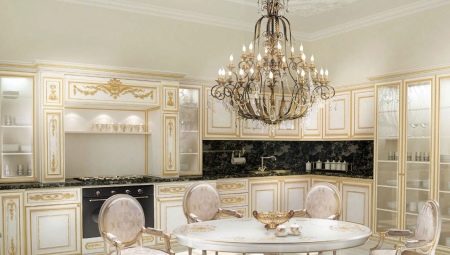
Patina kitchens always look expensive and stylish. They fit perfectly into classic interiors. Should you give preference to this design if you are equipping a city apartment? And what do you need to know about before starting the repair? We will try to answer these questions in this article.
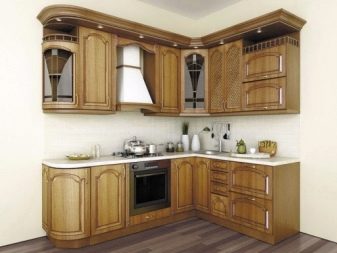
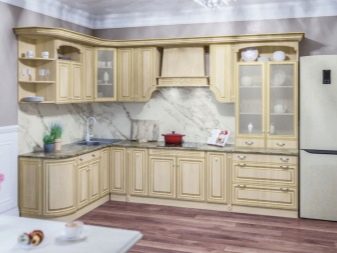
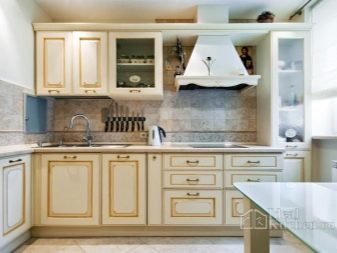
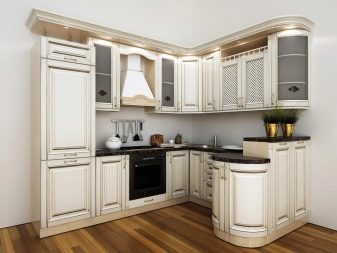
Peculiarities
If in the old days the patina was a sign of aging of solid wood, and such kitchens were often replaced by new and fresh ones, today designers are trying to artificially age new interior items. Patina gives the furniture uniqueness and comfort. It seems that such things have their own history, and its owners treat it as an object of art.
In Europe, furniture with a history is highly valued. It is not thrown into a landfill, but restored and passed on from generation to generation.
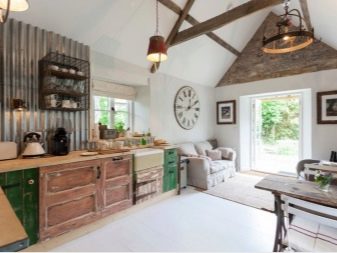
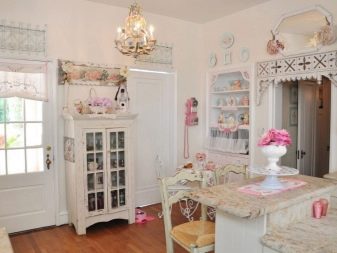
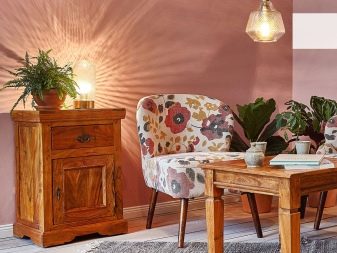
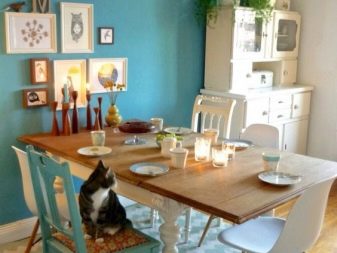
It should be noted that this should be high-quality solid wood furniture. There is no point in restoring and admiring the cracked boards.
But if you have not inherited such a vintage kitchen, then manufacturers and designers will be happy to offer a completely new set with a patina. Such furniture has its own characteristics.
- Microcracks in the paintwork. In this case, you should not be afraid for the safety of the array itself. It is pretreated with special means.
- Scuffs. An illusion is created that some parts were previously covered with gold, but during operation it was rubbed, cracked or fell off in some places.
- Inhomogeneity of color. Over time, some areas of wooden facades may fade, acquire a darker or lighter shade. Abrasions may appear on handles and doors.Designers try to achieve the same effect when they create interiors in a classic style with patina.
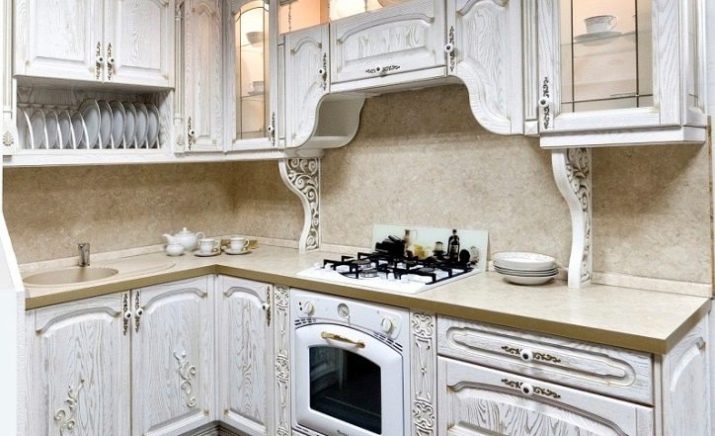
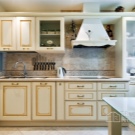
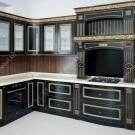
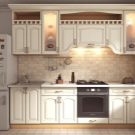
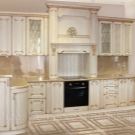
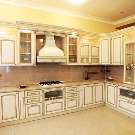
Advantages and disadvantages
Patina can often be found on the facades of modern kitchens. If you also want to use this unusual decorating technique in your own kitchen, then we suggest that you familiarize yourself with the pros and cons of this technology.
- She looks expensive and respectable. It would seem that scuffs can only worsen the appearance of the object. But this does not apply to patina. The task of the designer in this case is to add chic to the furniture with the help of this technique. As a result, one gets the impression that this old expensive furniture, and the gilding or silver on it, has faded and cracked over time.
- With the help of patina, you can give a second life to old interior items. The main thing here is to understand which furniture should be preserved and restored, and which one is better to get rid of after all. If this is a solid solid kitchen (it can be a kitchen cabinet, a table or chairs), then it deserves respect. With a little effort, you will end up with a truly unique designer piece. If it is made of chipboard or covered with a film, then it will be impossible to sand, varnish or paint it.
- A wide range of prices for kitchens with patina. Manufacturers offer a wide range of kitchens with similar designs. If we talk about budget options from chipboard and MDF, then only an imitation of such a color of the facades is used. In expensive solid wood models, the patting technology will be much more complicated, but such a set or furniture looks much more natural and expensive.
- Long service life. If the patina is made by craftsmen by hand (or even with the help of special devices), then the furniture will initially be resistant to abrasion and scratches.
- Relevance. Patina has long been a classic. Therefore, you will not need to worry that after a few seasons your kitchen will seem unfashionable and outdated. And the classic interiors themselves, in which patina is used, never go out of fashion.
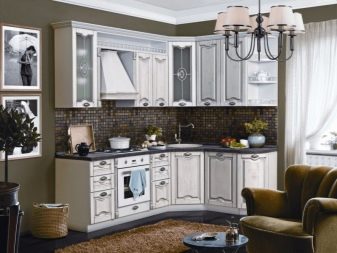
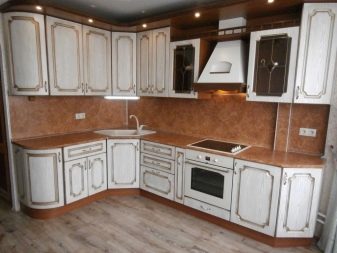
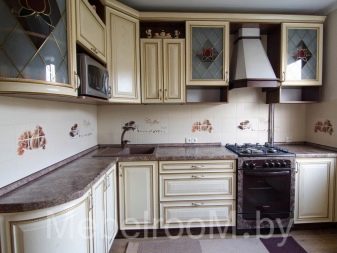
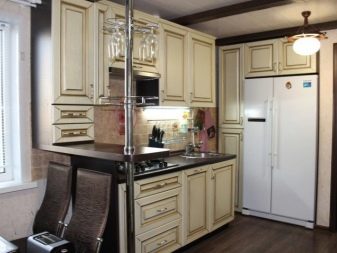
With the obvious merits of patina kitchens, it seems difficult to find any drawbacks in them. But they are still there. And if you are determined to purchase just such a kitchen, then you should know about them.
First of all, it should be understood that the facades and individual kitchen elements with patina are decorated with carved elements. On these beautiful monograms, dust and other pollution will accumulate. It is not enough just to wipe them with a damp cloth, it will be necessary to process each element, wiping all the bends and depressions. If you do not want to complicate your life so much, then choose a kitchen with a minimum amount of decorative elements.
Even a simple, beautiful side on the facade with a patina can become very dirty over time, then just wet cleaning cannot be done.
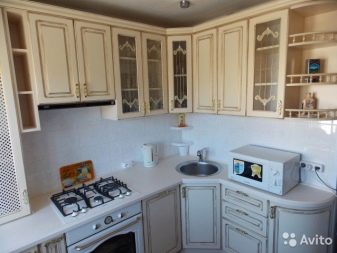
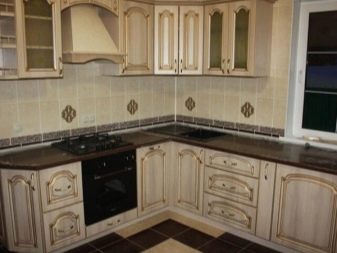
Patina is perfect for classic kitchens. But if you want to make it in the style of minimalism or other modern and original design, then you will have to abandon the patina. She will be superfluous and alien there.
Most often, patina can be found on furniture. light colors (beige, pistachio, milk, ivory). It is on them that she manifests herself in all its glory. But such shades require more careful maintenance, since any contamination will be noticeable.
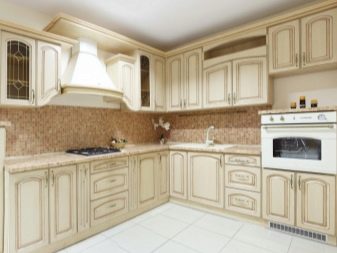
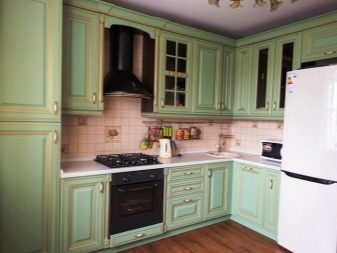
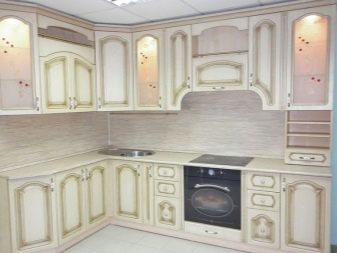
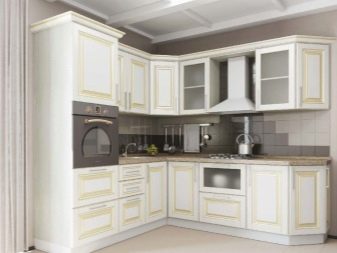
Materials (edit)
Patina kitchens can be found in various designs. Modern technologies make it possible to create such an effect not only on solid wood. There are other materials as well.
- MDF. Strong and durable material. MDF panels can be produced in various shapes. Better to choose veneered options. The veneer itself must not be subjected to any mechanical stress. The patina effect is achieved by applying a special paint. The protruding elements can be coated with a silver or gold patina.And in order to create the effect of natural burnout on the facades themselves, the paint is applied in a thicker layer at the edges and thinner in the middle.
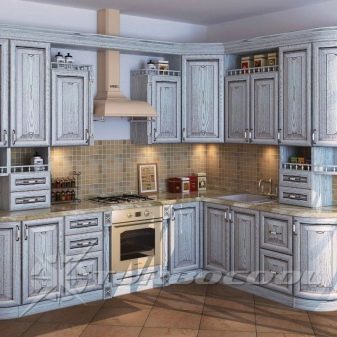
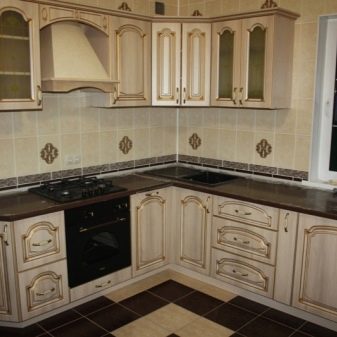
- Chipboard. More budget option. Kitchens made from this material are presented in a wide variety on the market. Among them there are those that imitate the patina. Chipboard panels are covered with a special PVC film. It is easy to guess that natural aging with the appearance of a patina is not available to her. Manufacturers also paint ready-made elements with acrylic paint, achieving the desired effect.
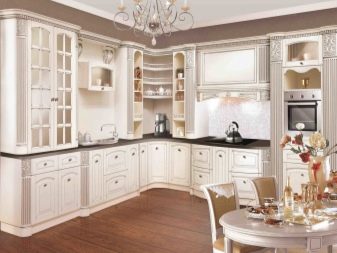
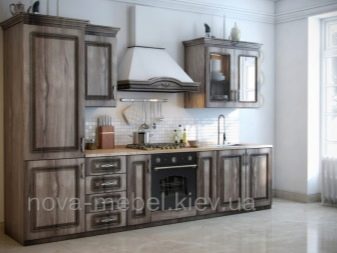
- Solid wood. It is thanks to the wood furniture that the patina appeared. In the course of natural aging and wear, "bald spots" appeared on it, the varnish cracked, and the color of the facades became heterogeneous. But if earlier this was considered a disadvantage, today they are trying to achieve just such an effect in completely new kitchens.
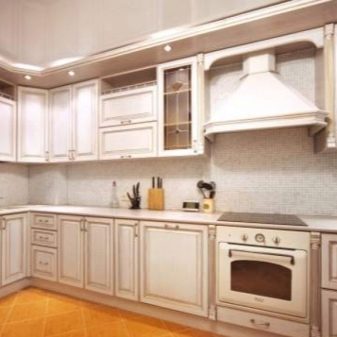
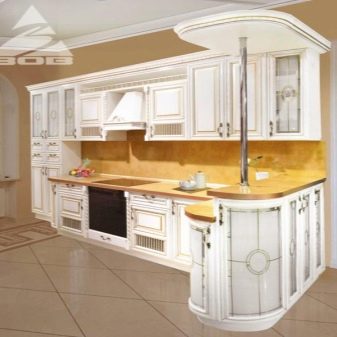
This is the most expensive option. But it is he who will look better than everyone else. Such expenses are fully justified. This material can serve you faithfully for a long time. Moreover, it can be restored.
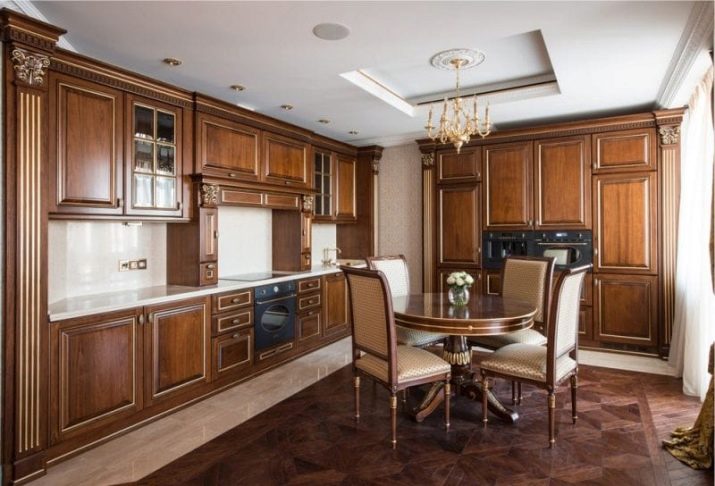
In new kitchens, the patting effect is achieved through mechanical action. The craftsman can use a wire brush or sandpaper. The aging effect can be achieved in several ways. Basically, the master applies two layers of different paint one on top of the other. When exposed to a brush, the top layer is unevenly erased, exposing the first.
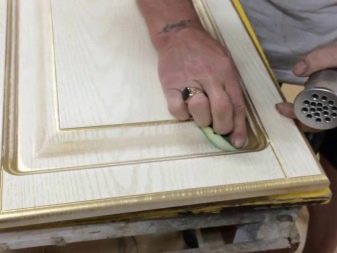
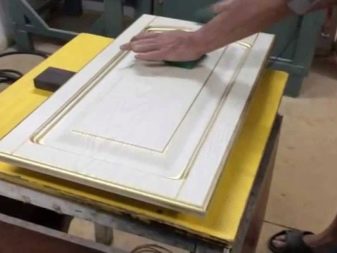
If uneven coloration is required, it can also be used a method of unevenly applying paint to a coating, followed by processing with sandpaper. All these methods of patting involve manual work. And it has always been valued higher than mass production.
Mostly patina is made on light surfaces, but sometimes you can find this technology on dark surfaces. In this case, uneven gilding (as if worn out by time) looks especially expressive.

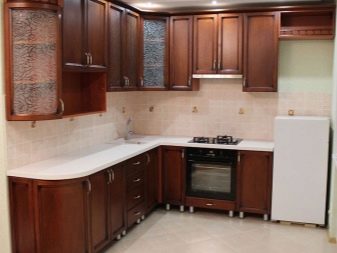
Types of patina
Initially, the term patina referred exclusively to metal surfaces on which, over time, a film of salts or oxides formed. But over time, it began to be applied in relation to wood.
In Europe, furniture is highly valued, on which a natural patina develops over time. The owners take good care of it, trying in every possible way to extend the service life and restoring it.
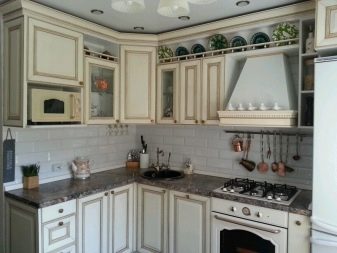
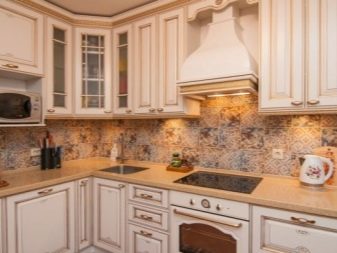
Today, patting involves several decorative techniques with which natural wood surfaces are processed. In relation to the kitchen, this can be a dining table, chairs, a kitchen set and individual interior items made of wood.
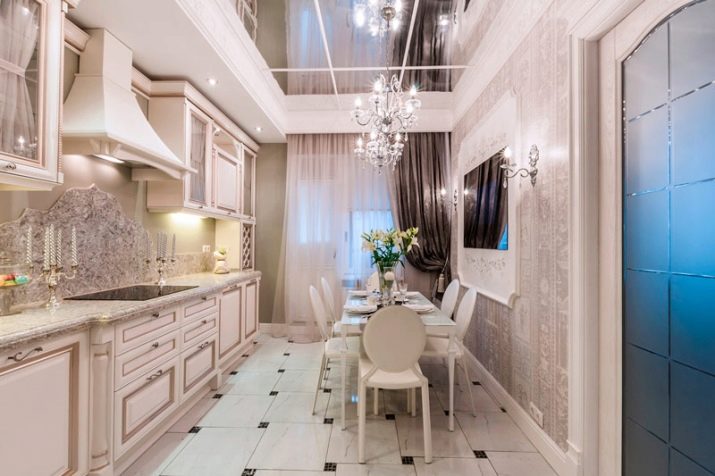
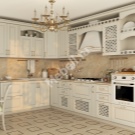
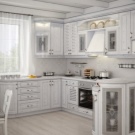
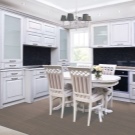
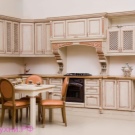
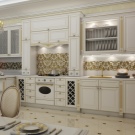
- Imitation of a noble patina. We have already described this method above. There is no mechanical impact here. The effect is achieved exclusively through a special way of painting the panels.
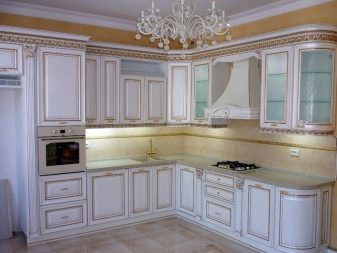
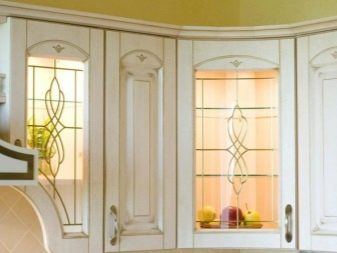
- Imitation of aging. Have you noticed that on old furniture, the area around the handles and the individual areas that are most often touched differ in shade from the base color. Designers are trying to achieve this effect on new headsets and dining areas. In this case, mechanical methods of influence are used, such as throwing. Often, special chemical compositions can be used to create a scuff effect. It is necessary to work with them very carefully, as if applied unevenly or excessively, instead of stylish furniture, you can get the opposite result.
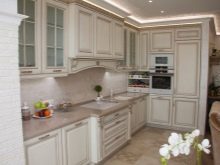
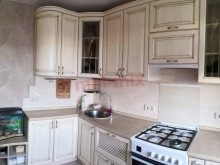
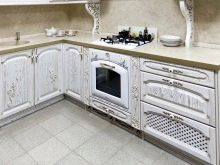
- Old paint effect... Craquelure is used to create this kind of patina. When applied to a surface, you may not notice the difference from regular paint. But when dry, cracks form.
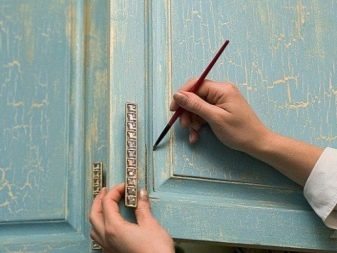
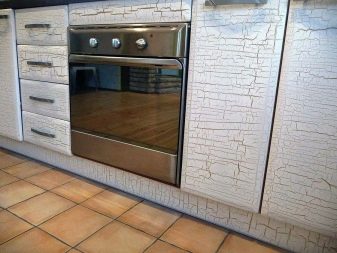
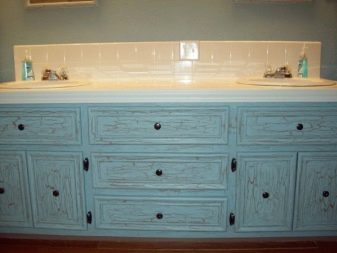
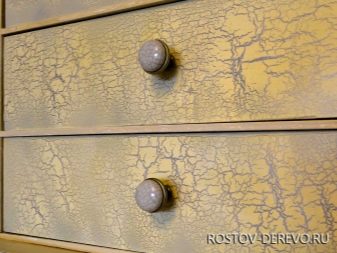
It is in this case that you can play with color, creating unique combinations. For example, dark oak with a beige bloom or walnut and gold will look very expressive.
It should be noted that this species is indirectly related to the real patina... But over time, he began to be ranked among it, since in both cases we are talking about an artificially aged surface.
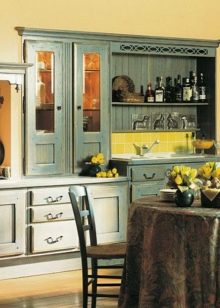
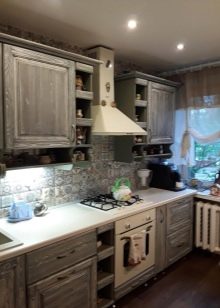

Classic kitchens with patina are a good solution for the interior. Such models always look very impressive. When creating, it is better to give preference to natural solid wood, but if the budget does not allow, you can find worthy and interesting options from MDF panels.
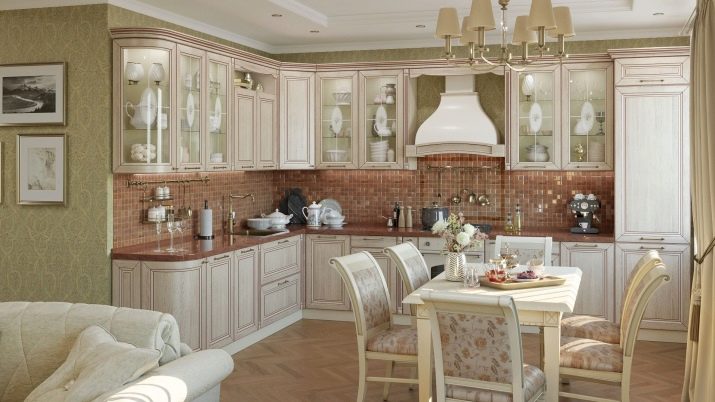
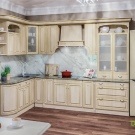
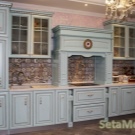
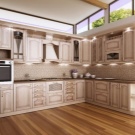
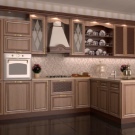
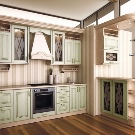
An overview of the white headset with gold patina in the video below.








